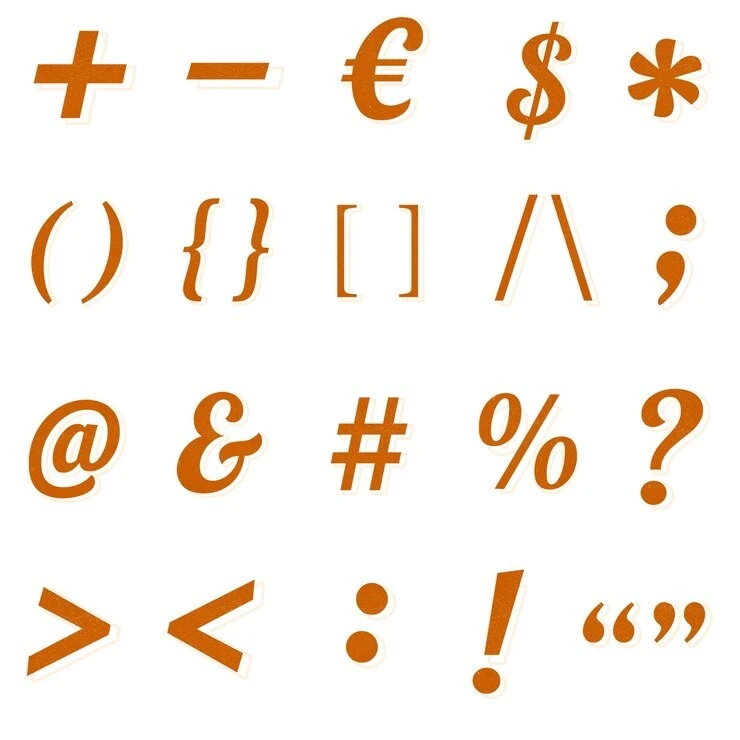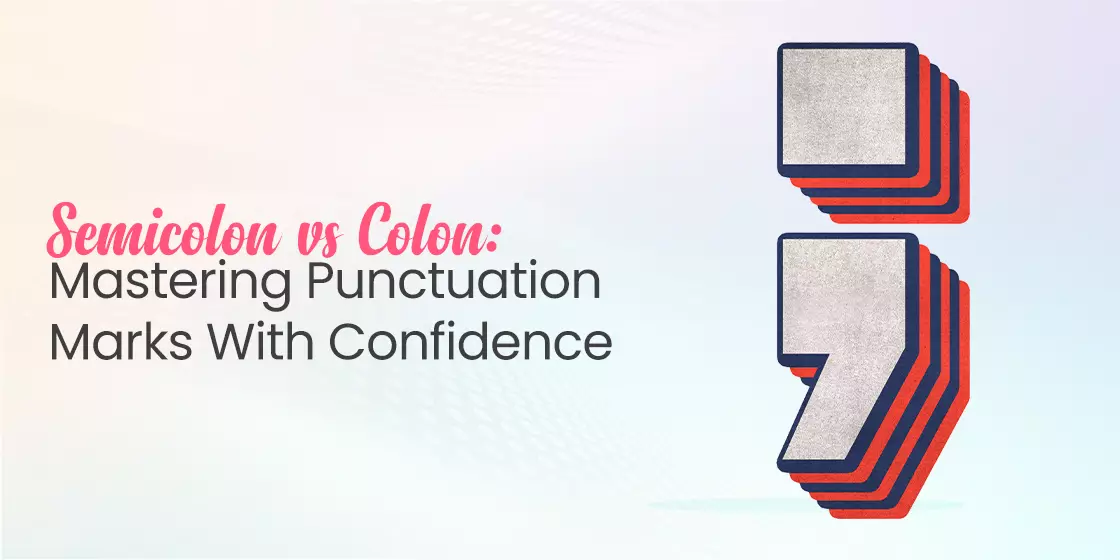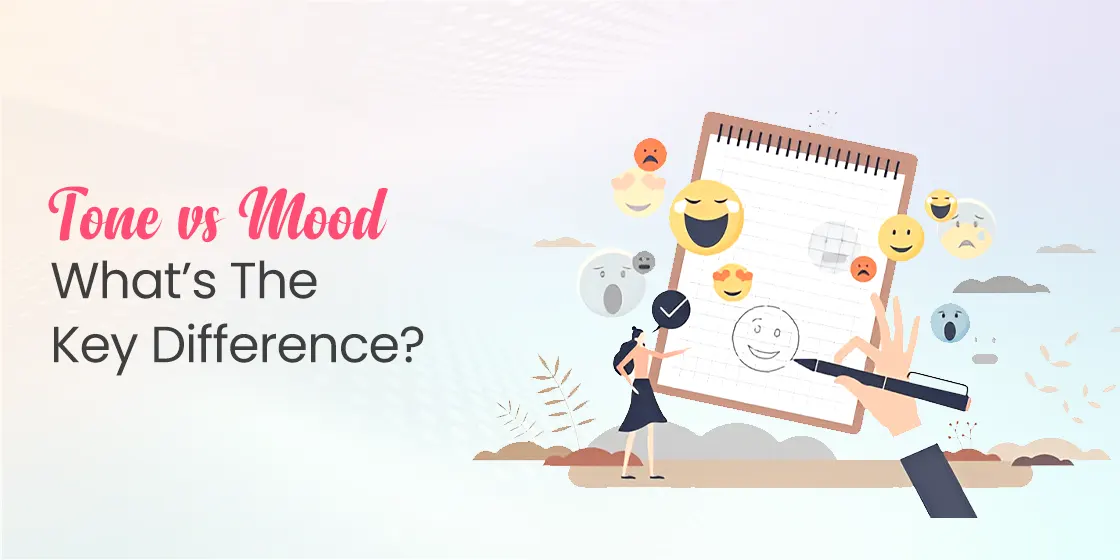Table of Content
Discover How and When to Use Semicolon vs Colon in Copywriting Correctly
The age-old question of semicolon vs colon continues to puzzle writers at every level. These two punctuation marks might look similar—both featuring dots in their design—but they serve distinctly different purposes in the English language. While one connects related thoughts as equals, the other introduces and emphasizes what follows.
Understanding when to use a semicolon versus a colon can transform your writing from good to exceptional. These powerful punctuation tools help create sophisticated sentence structures, improve readability, and demonstrate your command of proper grammar. Whether you’re crafting a professional email, writing an academic paper, or polishing your creative work, mastering these marks will elevate your communication skills.
The confusion between semicolons and colons is completely understandable, but once you learn their specific functions and applications, you’ll never second-guess your choice again. Let’s dive into the fascinating world of these punctuation powerhouses and discover how professional web copywriting services use them with absolute confidence.
Understanding the Semicolon (;)
The semicolon is a punctuation mark that resembles a dot placed over a comma, and this visual cue actually helps explain its function. A semicolon creates more separation between thoughts than a comma does but less than a period. It serves as a sophisticated bridge between closely related independent clauses, allowing writers to show connections without the finality of a full stop.
The primary purpose of a semicolon is to join two complete sentences that share a close relationship in meaning. Both parts of the sentence must be able to stand alone as grammatically correct sentences—this is the fundamental rule that governs semicolon usage. For example: “The concert was incredible; the guitarist’s solo brought tears to my eyes.” Each clause could function independently, but the semicolon suggests they’re intimately connected.
Semicolons also have a specialized function in complex list. When list items contain internal commas, semicolons help separate major groupings and prevent confusion. Consider this example: “Our itinerary includes visits to Paris, France; Rome, Italy; and Barcelona, Spain.” Without semicolons, readers would struggle to determine where one destination ends and another begins.
Boost your online presence with high-quality SEO-Optimized articles!
Boost Visibility
Deciphering the Colon (:)
A colon consists of two vertical dots and serves as a punctuation mark that announces or introduces what follows. Think of it as a spotlight that draws attention to the information coming next, whether that’s a list, explanation, quotation, or elaboration. The colon essentially says to readers: “Pay attention to what comes next—it’s important.”
The most crucial rule for colon usage is that it must follow a complete independent clause. The material before the colon should be able to stand alone as a grammatically correct sentence. What follows the colon can be a complete sentence, a phrase, a single word, or a list. For instance: “She had one goal: to become the best pianist in the orchestra.” The first part forms a complete thought, while the colon introduces the specific goal.
Colons excel at creating anticipation and emphasis in your writing. They’re particularly effective when you want to highlight the relationship between a general statement and specific details. Unlike semicolons, which treat both parts equally, colons establish a hierarchy where the information after the colon explains, defines, or expands upon what came before.
Semicolon vs Colon – Key Differences in Function and Purpose
The fundamental difference between semicolon vs colon lies in their relationship dynamics. Semicolons connect two independent clauses as equals, suggesting they’re related but giving neither more importance than the other. Colons create a hierarchical relationship where the second part explains, lists, or elaborates on the first part.
When you use a semicolon, you’re essentially replacing a period with a mark that shows connection. The semicolon suggests these thoughts are more closely related than typical consecutive sentences. With a colon, you’re creating anticipation and directing attention to what follows, often providing an answer, explanation, or list that the first clause has set up.
Consider timing and emphasis in your choice between these marks. Semicolons create a brief pause that maintains flow between related ideas, while colons create a longer pause that builds anticipation. If you want to emphasize what comes next, choose a colon. If you want to show connection between equal ideas, choose a semicolon.
When Should You Use a Semicolon?

Knowing how to use a semicolon is important when you want to know how to connect two closely related independent clauses without using a conjunction like “and” or “but.” This creates a more sophisticated sentence structure and suggests a deeper connection between the ideas. For example: “Technology advances rapidly; society struggles to keep pace.” Both clauses could stand alone, but the semicolon emphasizes their relationship.
Semicolons work particularly well before conjunctive adverbs like “however,” “therefore,” “moreover,” “nevertheless,” and “meanwhile.” These transition words create logical connections between ideas, and the semicolon provides the proper punctuation framework. Example: “The weather forecast predicted sunshine; however, storm clouds gathered quickly.” Note that the conjunctive adverb typically takes a comma after it.
In complex lists containing items with internal punctuation, semicolons become essential for clarity. When commas alone would create confusion, semicolons help readers understand groupings and relationships. Consider: “The committee includes Dr. Sarah Johnson, professor of biology; Mark Williams, head of marketing; and Jennifer Chen, director of finance.” Without semicolons, readers might think there are six people instead of three.
When is it Better to Use a Colon?

Use a colon to introduce lists, especially when the introductory clause specifically mentions that a list will follow. The clause before the colon should be complete and often contains words like “following,” “these,” or “include.” Example: “Pack three essential items for camping: a tent, sleeping bag, and flashlight.” The colon clearly signals that the promised list is about to appear.
Colons effectively introduce quotations, especially in formal writing or when you want to emphasize the quoted material. They work particularly well when the introductory clause sets up the quotation’s context or importance. For instance: “Einstein captured this perfectly: ‘Imagination is more important than knowledge.'” The colon creates anticipation and emphasizes the quotation’s significance.
When the second clause explains, clarifies, or elaborates on the first, a colon creates the perfect connection. This usage works when the second clause answers a question posed by the first or provides specific details about a general statement. Example: “The solution became clear: we needed to redesign the entire system from scratch.” The colon indicates that what follows explains the “clear solution.” The scenarios above explain clearly when colon is the preferred punctuation to be used.
Common Mistakes in Semicolon vs Colon Use and How to Avoid Them
One of the most frequent errors in semicolon vs colon usage involves placing a semicolon before a dependent clause or fragment. Remember that semicolons must connect two complete sentences that could stand alone. Incorrect: “I love hiking; especially in the mountains.” Correct: “I love hiking; mountain trails offer the best views.” The corrected version contains two independent clauses.
Many writers incorrectly use semicolons to introduce lists, which is a colon’s job. Incorrect: “I need three things from the store; milk, bread, and eggs.” Correct: “I need three things from the store: milk, bread, and eggs.” The colon properly introduces the list that the first clause promises.
Another common mistake involves capitalization after these punctuation marks. After a semicolon, never capitalize the following word unless it’s a proper noun or acronym. After a colon, capitalization rules vary by style guide, but generally capitalize only if what follows is a complete sentence or a proper noun. When in doubt, check your preferred style guide for specific rules.
Capitalization and Style Considerations
Understanding capitalization after semicolons and colons helps ensure professional, polished writing, one of the essential copywriting skills today. After a semicolon, the following word should be lowercase unless it’s a proper noun, acronym, or other word that requires capitalization regardless of position. This rule remains consistent across all major style guides and writing contexts.
Colon capitalization proves more complex and varies between American and British English conventions. In American English, capitalize the first word after a colon when it begins a complete sentence. In British English, typically only capitalize proper nouns or acronyms after colons. Example: American style: “Remember this rule: Always proofread your work.” British style: “Remember this rule: always proofread your work.”
Different academic and professional style guides may have specific requirements for colon capitalization. APA, MLA, Chicago, and other style systems sometimes have unique rules, so always consult the appropriate style manual when working in academic or professional contexts. Consistency within your document matters more than following any single approach, provided you adhere to your chosen style guide.
Advanced Usage and Special Cases in Semicolon vs Colon Usage

Semicolons can function as “super commas” in extremely complex sentences filled with commas, though this usage should be rare. When a sentence becomes so long and comma-heavy that readers struggle to follow the logic, strategically placed semicolons can mark major breaks. However, it’s usually better to revise such sentences into shorter, clearer statements rather than relying on semicolons to rescue overly complex constructions.
Colons have specialized uses beyond their primary functions. They separate hours from minutes in American time notation (2:30 PM), indicate ratios (3:1 odds), and appear in biblical references (John 3:16). In business writing, colons follow salutations in formal letters (Dear Ms. Johnson:), though this practice varies by region and context.
Creative writers sometimes bend punctuation rules for stylistic effect, but these departures should be deliberate and purposeful. In dialogue, characters might use fragments or run-on sentences that break standard punctuation rules, reflecting natural speech patterns. However, these stylistic choices require solid understanding of correct usage as a foundation.
Building Confidence Through Practice
Mastering semicolon vs colon usage requires practice and attention to how these marks function in different contexts. Start by identifying these punctuation marks in your reading material and analyzing why authors chose them. Notice how semicolons connect related ideas and how colons introduce important information, quotations, or lists.
Practice creating your own examples of correct semicolon and colon usage. Begin with simple sentences and gradually work toward constructions that are more complex. Focus on understanding the logical relationships these marks create rather than memorizing rigid rules. This approach builds intuitive understanding in technical copywriting that serves you well across different writing situations.
Review your own writing to identify opportunities for improving punctuation usage. Look for places where semicolons might connect related sentences more effectively than periods, or where colons could introduce lists or explanations more clearly than other punctuation marks. Regular self-assessment helps develop the editorial eye that distinguishes strong writers.
Frequently Asked Questions
| What’s the main difference between a semicolon and a colon? The main difference between a semicolon and a colon lies in their function and the relationship they create. A semicolon (;) connects two closely related independent clauses as equals, showing they’re connected but giving neither more importance. A colon (:) introduces information that explains, lists, or elaborates on what came before, creating a hierarchical relationship where the second part provides details about the first. |
| Can I use a semicolon to introduce a list? No, you should not use a semicolon to introduce a list. This is a common mistake. Use a colon to introduce lists when the introductory clause is complete and specifically sets up the list. For example: “Pack these items: tent, sleeping bag, flashlight” (correct) versus “Pack these items; tent, sleeping bag, flashlight” (incorrect). Semicolons are used within complex lists to separate items that contain commas. |
| Do I capitalize the word after a semicolon or colon? After a semicolon, never capitalize the following word unless it’s a proper noun, acronym, or other word that normally requires capitalization. After a colon, capitalization rules vary: in American English, capitalize if what follows is a complete sentence; in British English, typically only capitalize proper nouns. Always check your preferred style guide for specific requirements. |
| When should I use a semicolon instead of a period? Use a semicolon instead of a period when you have two closely related independent clauses that you want to connect more intimately than separate sentences would allow. The semicolon suggests these thoughts are more closely related than typical consecutive sentences. For example: “The storm was fierce; the old oak tree barely survived” shows a closer relationship than using two separate sentences. |
| Can both semicolons and colons be used incorrectly in the same sentence? While you typically wouldn’t use both a semicolon and colon incorrectly in the same sentence (since they serve different functions), you could misuse one while correctly using the other. For instance: “I have three goals; exercise daily, eat healthy: and sleep well” incorrectly uses a semicolon where a colon should introduce the list, and incorrectly uses a colon where a comma should separate list items. The correct version would be: “I have three goals: exercise daily, eat healthy, and sleep well.” |
Conclusion
The semicolon vs colon distinction becomes second nature once you understand their fundamental purposes and practice their correct application. Semicolons excel at connecting related independent clauses as equals, while colons introduce and emphasize what follows. Both marks enhance your writing by creating sophisticated sentence structures and improving clarity.
Remember that effective punctuation serves your readers by making your meaning clear and your writing engaging. Whether you’re connecting related thoughts with a semicolon or introducing important information with a colon, these marks help you communicate more precisely and professionally. The investment in learning these skills pays dividends across all your writing endeavors.
Don’t let semicolon vs colon confusion hold back your writing confidence. With understanding of their distinct functions and regular practice, you’ll soon use these punctuation marks naturally and effectively. Your readers will appreciate the clarity and sophistication these tools bring to your communication, and you’ll enjoy the confidence that comes from mastering these essential writing skills.

Unleash your brand story`s potential with eContentSol – your creative writing companion. We craft narratives that captivate. Ready to elevate your content game? Dive into creativity with us and let`s bring your ideas to life.


